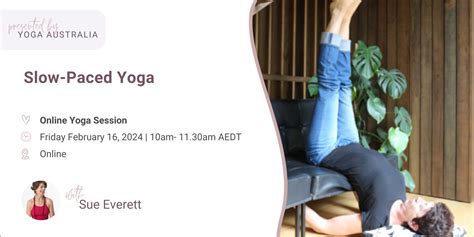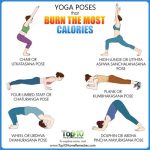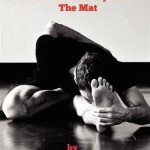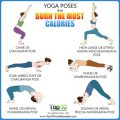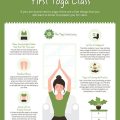Understanding the Differences: Slow-Paced vs. Fast-Paced Yoga for Optimal Wellness
Yoga is a versatile practice that caters to various needs, whether physical, mental, or spiritual. However, not all yoga styles are created equal. The differences between slow-paced and fast-paced yoga lie in their techniques, outcomes, and suitability for different practitioners. In this article, we dive into these two distinct yoga styles, offering a comprehensive comparison to help you decide which practice best suits your wellness journey.
Introduction
As yoga has evolved, it has taken on numerous forms, each with its own pace and focus. Slow-paced yoga, often associated with styles like Hatha and Yin, emphasizes mindfulness, alignment, and deep stretching. Fast-paced yoga, found in styles like Vinyasa or Ashtanga, focuses on dynamic movements, breath synchronization, and cardiovascular engagement. While both slow and fast-paced yoga offer significant health benefits, they serve different goals and appeal to different practitioners. Understanding these styles’ specific features is crucial for choosing the most appropriate practice for your needs.
Key Concepts
Before diving deeper, let’s define the key characteristics of both slow-paced and fast-paced yoga.
- Slow-Paced Yoga: Focuses on holding poses for longer durations, encouraging deeper muscular engagement and mental calmness.
- Fast-Paced Yoga: Emphasizes rapid movement from one pose to the next, often synchronized with breath to create fluidity and cardiovascular intensity.
Comparing Slow-Paced and Fast-Paced Yoga
| Aspect | Slow-Paced Yoga | Fast-Paced Yoga |
|---|---|---|
| Primary Focus | Mindfulness, flexibility, and relaxation | Strength, cardiovascular fitness, and endurance |
| Breathing Techniques | Slow, deep breathing (e.g., Ujjayi) | Quick, rhythmic breathing synchronized with movements |
| Pose Duration | Poses held for several minutes | Poses flow into one another quickly, typically held for a few seconds |
| Physical Benefits | Improved flexibility, joint health, and stress relief | Increased muscle tone, stamina, and weight loss |
| Mental Benefits | Enhanced mindfulness and emotional balance | Improved focus and energy levels |
Historical Context
Yoga, in its many forms, has evolved over centuries. Traditionally, yoga was a slow and meditative practice, focusing on breathwork (Pranayama) and holding poses (Asanas) for extended periods. This method, rooted in Hatha Yoga, sought to prepare the body for meditation and self-awareness.
However, as yoga became more popular in the West, faster-paced styles such as Ashtanga and Vinyasa emerged. These styles catered to individuals seeking a more vigorous, fitness-oriented experience. The rise of fast-paced yoga reflects the growing demand for physically challenging workouts that also integrate mindfulness and breath control.
Current State Analysis
Today, slow and fast-paced yoga coexist as popular options for practitioners worldwide. Many yoga studios offer both types of classes to accommodate diverse fitness levels and preferences. However, these styles often attract distinct groups of individuals:
- Those seeking relaxation, rehabilitation, or deeper self-awareness may gravitate toward slow-paced yoga.
- Individuals looking for a physically demanding workout or those with fitness goals like weight loss may prefer fast-paced yoga.
Despite these differences, there is growing interest in hybrid approaches that blend both slow and fast-paced elements. For example, a Vinyasa flow class might end with restorative poses to balance intensity with relaxation.
Practical Applications
Both slow and fast-paced yoga have practical applications depending on your goals and health conditions:
- For Stress Relief: Slow-paced yoga, such as Yin or Restorative yoga, is ideal for reducing stress, calming the nervous system, and promoting relaxation. Long-held poses allow for deeper stretching and greater muscular release, which aids in mental clarity.
- For Fitness and Weight Loss: Fast-paced yoga, like Power Yoga or Vinyasa, can be used as a form of cardiovascular exercise. The rapid transitions between poses increase heart rate, burn calories, and improve stamina.
- For Rehabilitation: Slow-paced yoga is often used in physical therapy to promote healing, especially for injuries related to flexibility and mobility. The gentle nature of the practice minimizes strain on the body while improving range of motion.
- For Building Strength: Fast-paced yoga engages muscles in a way similar to strength training. Dynamic movements require continuous engagement of the core and limbs, helping build lean muscle mass over time.
Case Studies
Several real-world examples highlight the distinct benefits of slow and fast-paced yoga:
- Case Study 1: Athlete Rehabilitation: A professional tennis player recovering from a knee injury turned to slow-paced yoga to regain flexibility and reduce joint stress. By focusing on slow, controlled movements, the athlete experienced significant improvement in mobility and reduced pain over time.
- Case Study 2: Weight Loss Journey: An individual with a goal to lose 20 pounds incorporated fast-paced Vinyasa yoga into their weekly routine. After six months, they saw significant improvements in cardiovascular fitness and weight loss, shedding 18 pounds while also improving muscle tone.
- Case Study 3: Stress Management in Corporate Settings: A group of high-stress professionals implemented slow-paced yoga sessions during lunch breaks. The program resulted in a 30% decrease in self-reported stress levels and improved overall job satisfaction.
Stakeholder Analysis
Various stakeholders in the wellness and fitness industries have an interest in promoting both slow and fast-paced yoga. These include:
- Healthcare Providers: Doctors and physical therapists often recommend slow-paced yoga for patients recovering from injuries or managing chronic conditions like arthritis.
- Fitness Trainers: Many personal trainers incorporate fast-paced yoga into their clients’ routines to improve flexibility, strength, and cardiovascular health.
- Yoga Studios and Instructors: Yoga teachers benefit from offering a range of classes that cater to different levels of fitness and wellness goals, ensuring they reach a broader clientele.
Implementation Guidelines
For those looking to integrate slow or fast-paced yoga into their lives, here are some best practices:
- Identify Your Goals: Determine whether you want to focus on relaxation, rehabilitation, or fitness. This will guide your choice between slow and fast-paced styles.
- Start with the Basics: If you’re new to yoga, it’s essential to build a strong foundation by starting with beginner-level classes, regardless of the pace.
- Consider Your Fitness Level: Those new to physical activity may benefit from slow-paced yoga to avoid injury. More experienced individuals may prefer fast-paced styles for a more intense workout.
- Maintain Consistency: Regular practice is key to reaping the benefits of yoga, whether slow or fast-paced. Aim for at least 2–3 sessions per week.
Ethical Considerations
The yoga community often grapples with ethical issues, particularly around commercialization and accessibility:
- Commercialization of Yoga: As yoga has become a multi-billion-dollar industry, some argue that its commercialization detracts from its spiritual and philosophical roots. Fast-paced yoga, in particular, is sometimes criticized for emphasizing physical fitness over mental and emotional well-being.
- Accessibility: While yoga is marketed as a practice for everyone, the cost of classes, equipment, and attire can make it inaccessible to many. Offering donation-based or free classes, especially for slower-paced, therapeutic styles, could bridge this gap.
Limitations and Future Research
While both slow and fast-paced yoga offer numerous benefits, there are still gaps in our understanding of how these practices impact different populations. Future research could explore:
- Long-Term Effects on Mental Health: More longitudinal studies are needed to determine the lasting mental health benefits of slow versus fast-paced yoga.
- Specific Populations: How do these yoga styles benefit specific groups, such as the elderly, individuals with disabilities, or those with chronic pain conditions?

